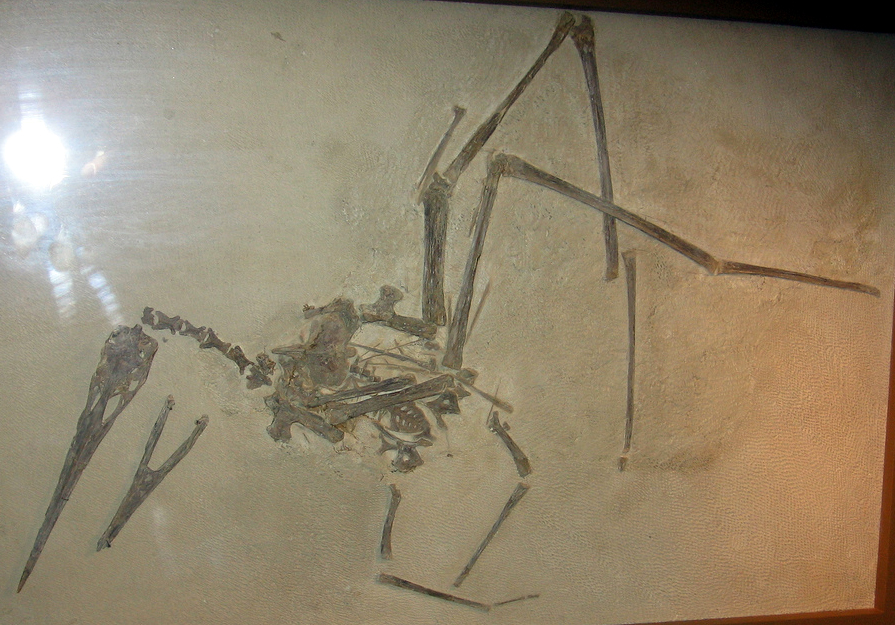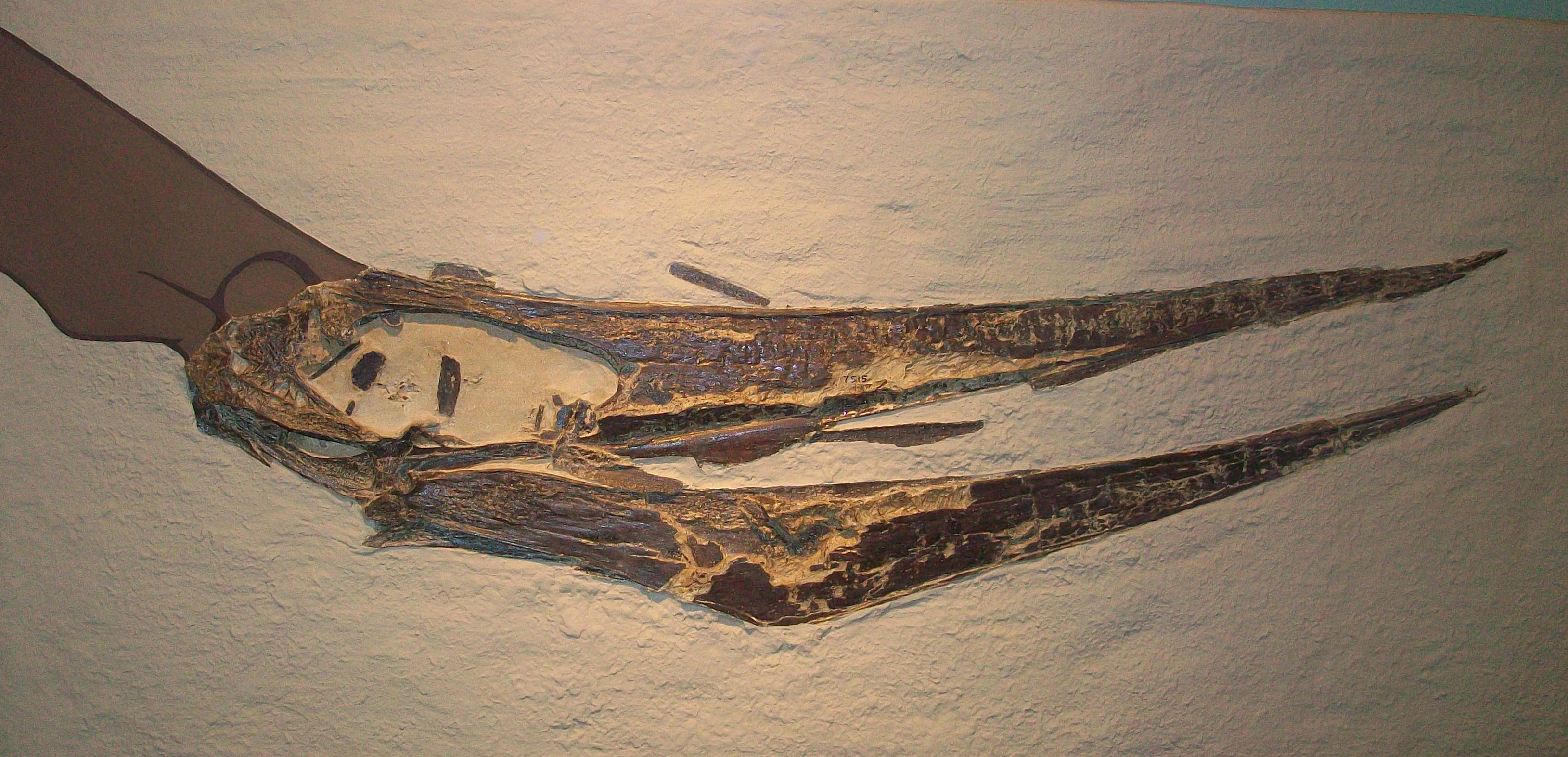|
Zhejiangopterus Postcrania
''Zhejiangopterus'' is a genus of azhdarchid pterosaur known from one species, which lived in China during the late Cretaceous Period. The genus was named in 1994 by Chinese paleontologists Cai Zhengquan and Wei Feng. The type species is ''Zhejiangopterus linhaiensis''. The genus name refers to Zhejiang Province and a Latinized Greek ''pteron'', "wing". The specific name refers to the city of Linhai. Discovery In 1986 a young chalkstone quarry worker named Xu Chengfa, found a large fossil near the village of Aolicun in Linhai. Xu by letter informed the director of the Zhejiang Museum of Natural History at Hangzhou, Ming Hua, who from it understood the remains were those of an unknown pterosaur. Therefore, he sent a team consisting of the describers and Wu Weitang to investigate. They secured the fossil, instructing the local population to be alert for possible further finds. Xu himself managed to find three more specimens before being killed in an accident in 1988; another w ... [...More Info...] [...Related Items...] OR: [Wikipedia] [Google] [Baidu] |
Late Cretaceous
The Late Cretaceous (100.5–66 Ma) is the younger of two epochs into which the Cretaceous Period is divided in the geologic time scale. Rock strata from this epoch form the Upper Cretaceous Series. The Cretaceous is named after ''creta'', the Latin word for the white limestone known as chalk. The chalk of northern France and the white cliffs of south-eastern England date from the Cretaceous Period. Climate During the Late Cretaceous, the climate was warmer than present, although throughout the period a cooling trend is evident. The tropics became restricted to equatorial regions and northern latitudes experienced markedly more seasonal climatic conditions. Geography Due to plate tectonics, the Americas were gradually moving westward, causing the Atlantic Ocean to expand. The Western Interior Seaway divided North America into eastern and western halves; Appalachia and Laramidia. India maintained a northward course towards Asia. In the Southern Hemisphere, Australia and Ant ... [...More Info...] [...Related Items...] OR: [Wikipedia] [Google] [Baidu] |
Paratype
In zoology and botany, a paratype is a specimen of an organism that helps define what the scientific name of a species and other taxon actually represents, but it is not the holotype (and in botany is also neither an isotype nor a syntype). Often there is more than one paratype. Paratypes are usually held in museum research collections. The exact meaning of the term ''paratype'' when it is used in zoology is not the same as the meaning when it is used in botany. In both cases however, this term is used in conjunction with ''holotype''. Zoology In zoological nomenclature, a paratype is officially defined as "Each specimen of a type series other than the holotype.", ''International Code of Zoological Nomenclature'' In turn, this definition relies on the definition of a "type series". A type series is the material (specimens of organisms) that was cited in the original publication of the new species or subspecies, and was not excluded from being type material by the author (th ... [...More Info...] [...Related Items...] OR: [Wikipedia] [Google] [Baidu] |
Neoazhdarchia
Azhdarchoidea (or azhdarchoids) is a group of pterosaurs within the suborder Pterodactyloidea, more specifically within the group Ornithocheiroidea. Pterosaurs belonging to this group lived throughout the Early and Late Cretaceous periods, with one tentative member, ''Tendaguripterus'', that lived in the Late Jurassic period. The largest azhdarchoids include members of the family Azhdarchidae, examples of these are ''Quetzalcoatlus'', ''Hatzegopteryx'', and ''Arambourgiania''. The Azhdarchoidea has been recovered as either closely related to the Ctenochasmatoidea, as the sister taxon of the Pteranodontoidea within the Ornithocheiroidea, or within the Tapejaroidea, which in turn was also within the Ornithocheiroidea. Classification Azhdarchoidea was given a phylogenetic definition by David Unwin in 2003. Unwin defined the group as the most recent common ancestor of ''Quetzalcoatlus'' and '' Tapejara'', and all its descendants.Unwin, D. M., (2003). "On the phylogeny and evolutionar ... [...More Info...] [...Related Items...] OR: [Wikipedia] [Google] [Baidu] |
Cladogram
A cladogram (from Greek ''clados'' "branch" and ''gramma'' "character") is a diagram used in cladistics to show relations among organisms. A cladogram is not, however, an evolutionary tree because it does not show how ancestors are related to descendants, nor does it show how much they have changed, so many differing evolutionary trees can be consistent with the same cladogram. A cladogram uses lines that branch off in different directions ending at a clade, a group of organisms with a last common ancestor. There are many shapes of cladograms but they all have lines that branch off from other lines. The lines can be traced back to where they branch off. These branching off points represent a hypothetical ancestor (not an actual entity) which can be inferred to exhibit the traits shared among the terminal taxa above it. This hypothetical ancestor might then provide clues about the order of evolution of various features, adaptation, and other evolutionary narratives about ance ... [...More Info...] [...Related Items...] OR: [Wikipedia] [Google] [Baidu] |
Azhdarchidae
Azhdarchidae (from the Persian word , , a dragon-like creature in Persian mythology) is a family of pterosaurs known primarily from the Late Cretaceous Period, though an isolated vertebra apparently from an azhdarchid is known from the Early Cretaceous as well (late Berriasian age, about 140 million years ago). Azhdarchids included some of the largest known flying animals of all time, but smaller cat-size members have also been found. Originally considered a sub-family of Pteranodontidae, Nesov (1984) named the Azhdarchinae to include the pterosaurs ''Azhdarcho'', ''Quetzalcoatlus'', and ''Titanopteryx'' (now known as ''Arambourgiania''). They were among the last known surviving members of the pterosaurs, and were a rather successful group with a worldwide distribution. By the time of the end-Cretaceous mass extinction, most pterosaur families except for the Azhdarchidae disappear from the fossil record, but recent studies indicate a wealth of pterosaurian fauna, including pteran ... [...More Info...] [...Related Items...] OR: [Wikipedia] [Google] [Baidu] |
David Unwin
David (; , "beloved one") (traditional spelling), , ''Dāwūd''; grc-koi, Δαυΐδ, Dauíd; la, Davidus, David; gez , ዳዊት, ''Dawit''; xcl, Դաւիթ, ''Dawitʿ''; cu, Давíдъ, ''Davidŭ''; possibly meaning "beloved one". was, according to the Hebrew Bible, the third king of the United Kingdom of Israel. In the Books of Samuel, he is described as a young shepherd and harpist who gains fame by slaying Goliath, a champion of the Philistines, in southern Canaan. David becomes a favourite of Saul, the first king of Israel; he also forges a notably close friendship with Jonathan, a son of Saul. However, under the paranoia that David is seeking to usurp the throne, Saul attempts to kill David, forcing the latter to go into hiding and effectively operate as a fugitive for several years. After Saul and Jonathan are both killed in battle against the Philistines, a 30-year-old David is anointed king over all of Israel and Judah. Following his rise to power, David c ... [...More Info...] [...Related Items...] OR: [Wikipedia] [Google] [Baidu] |
Quetzalcoatlus
''Quetzalcoatlus'' is a genus of pterosaur known from the Late Cretaceous period of North America (Maastrichtian stage); its members were among the largest known flying animals of all time. ''Quetzalcoatlus'' is a member of the Azhdarchidae, a family of advanced toothless pterosaurs with unusually long, stiffened necks. Its name comes from the Aztec feathered serpent god Quetzalcoatl. The type species is ''Q. northropi'', named by Douglas Lawson in 1975; the genus also includes the smaller species ''Q. lawsoni'', which was known for many years as an unnamed species before being named by Brian Andres and Wann Langston Jr. (posthumously) in 2021. Discovery and species The first ''Quetzalcoatlus'' fossils were discovered in Texas, United States, from the Maastrichtian Javelina Formation at Big Bend National Park (dated to around 68 million years ago) in 1971 by Douglas A. Lawson, then a geology graduate student from the Jackson School of Geosciences at the University of Texas ... [...More Info...] [...Related Items...] OR: [Wikipedia] [Google] [Baidu] |
Nyctosaurus
''Nyctosaurus'' (meaning "night lizard" or "bat lizard") is a genus of nyctosaurid pterosaur from the Late Cretaceous period of what is now the Niobrara Formation of the mid-western United States, which, during the time ''Nyctosaurus'' was alive, was covered in an extensive shallow sea. Some remains belonging to a possible ''Nyctosaurus'' species called ''N.lamegoi'' have been found in Brazil, making ''Nyctosaurus'' more diverse. The genus ''Nyctosaurus'' has had numerous species referred to it, though how many of these may actually be valid requires further study. At least one species possessed an extraordinarily large antler-like cranial crest. ''Nyctosaurus'' was a mid-sized pterosaur that lived along the shores of the Niobrara Formation of the United States, which back then was within a large inland sea called the Western Interior Seaway. It has been suggested that it would have flown similar to modern-day soaring birds such as albatrosses, which consisted of flying very lon ... [...More Info...] [...Related Items...] OR: [Wikipedia] [Google] [Baidu] |
Pteranodon
''Pteranodon'' (); from Ancient Greek (''pteron'', "wing") and (''anodon'', "toothless") is a genus of pterosaur that included some of the largest known flying reptiles, with ''P. longiceps'' having a wingspan of . They lived during the late Cretaceous geological period of North America in present-day Kansas, Nebraska, Wyoming, South Dakota and Alabama. More fossil specimens of ''Pteranodon'' have been found than any other pterosaur, with about 1,200 specimens known to science, many of them well preserved with nearly complete skulls and articulated skeletons. It was an important part of the animal community in the Western Interior Seaway. ''Pteranodon'' was not a dinosaur. By definition, all dinosaurs belong to the group Dinosauria; ''Pteranodon'' belongs to the group Pterosauria. Nonetheless, ''Pteranodon'' is the most famous pterosaur, frequently featured in dinosaur media and strongly associated with dinosaurs by the general public. While not dinosaurs, pterosaurs such as ' ... [...More Info...] [...Related Items...] OR: [Wikipedia] [Google] [Baidu] |
Nyctosauridae
Nyctosauridae (meaning "night lizards" or "bat lizards") is a family of specialized soaring pterosaurs of the late Cretaceous Period of North America, Africa, and possibly Europe. It was named in 1889 by Henry Alleyne Nicholson and Richard Lydekker.Nicholson, H.A. and Lydekker, R. (1889). ''A manual of palaeontology for the use of students: with a general introduction on the principles of palæontology, Volume II''. Blackwood, 1889. Nyctosaurids are characterized by their lack of all but the wing finger. In most pterosaurs, the hand has four fingers, with the fourth elongated to support the wing, and the remaining three are usually small, clawed, and used in walking or climbing. The lack of functional fingers in nyctosaurids may suggest that they spent almost all of their time in the air, rarely walking on the ground. Nyctosaurids also possessed a distinctively enlarged crest for muscle attachment on their upper arm bone, or humerus, the ''deltopectoral crest'', hatchet shaped li ... [...More Info...] [...Related Items...] OR: [Wikipedia] [Google] [Baidu] |








